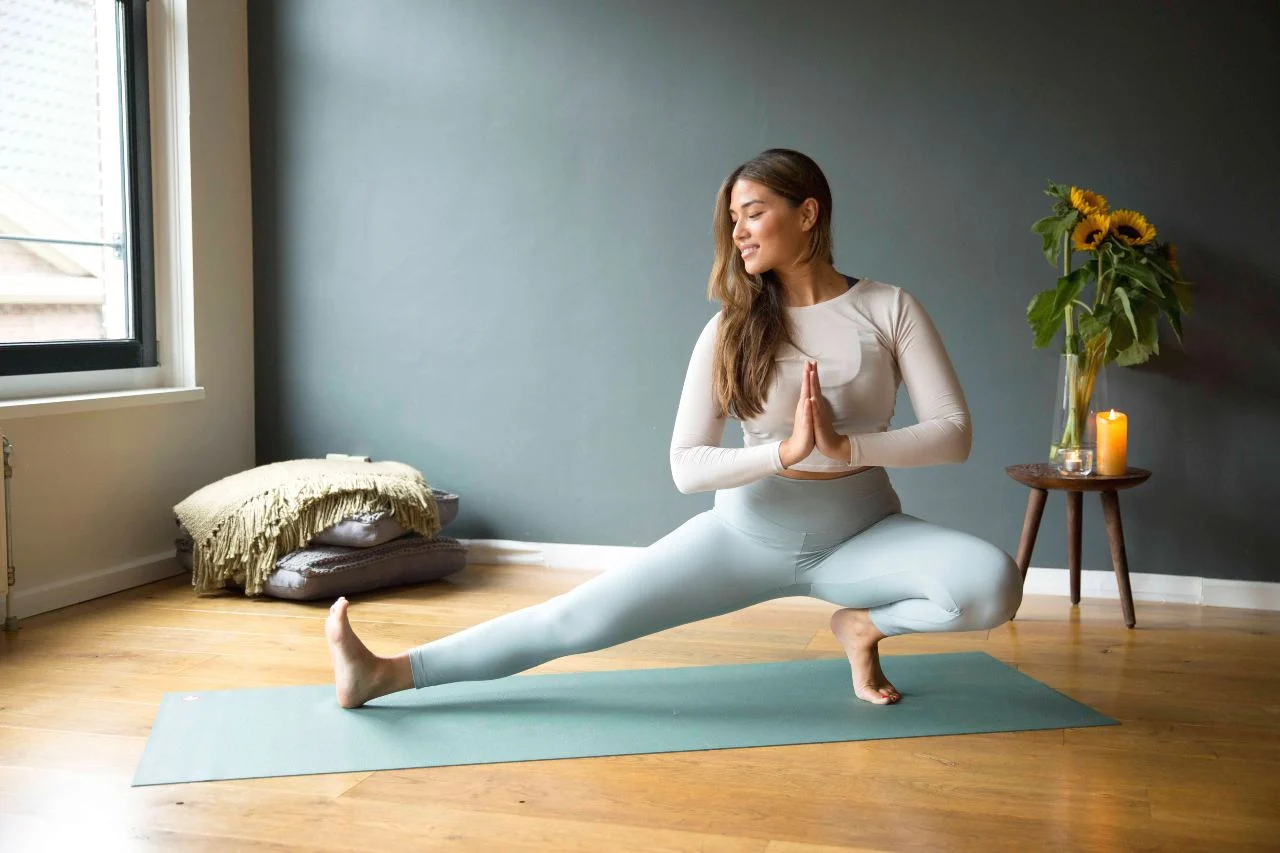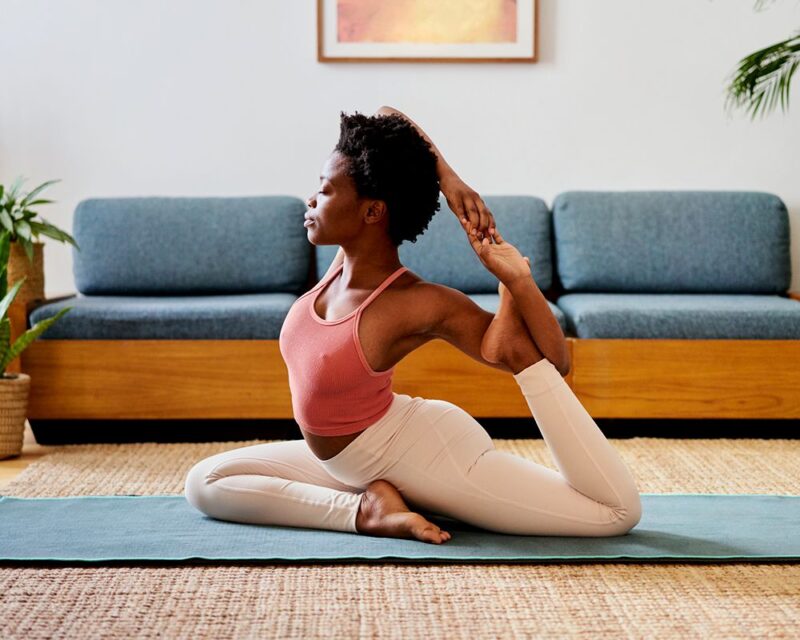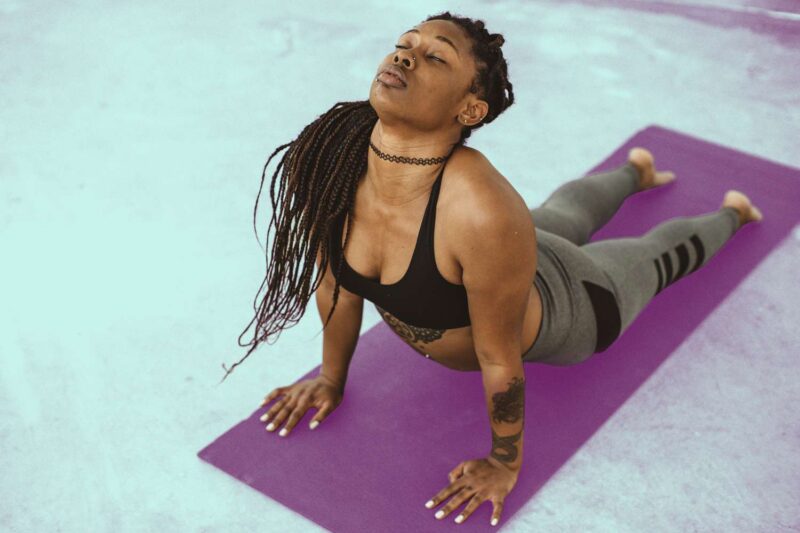Yoga has gained immense popularity as both a physical exercise and a relaxation technique. People from all walks of life are turning to yoga for its numerous benefits, and one critical aspect to consider is how often you should practice. In this article, we’ll explore the various facets of determining the ideal frequency for your training sessions. We’ll delve into the physical, mental, and emotional advantages of regular practice, introduce different styles, align your fitness goals with your routine, and offer practical guidance for beginners and experienced yogis alike.
Benefits of Regular Yoga Practice

Regular yoga offers a plethora of benefits that encompass the physical, mental, and emotional dimensions of well-being. On a physical level, it enhances flexibility, strengthens muscles, improves posture, and increases overall body awareness. Mentally, it reduces stress, enhances focus, and promotes relaxation through controlled breathing and mindfulness. Emotionally, it fosters a positive outlook, boosts self-esteem, and instills a profound sense of calm and balance in your daily life. If you want to see how this activity can change your life further please check here.
Different Types of Yoga
Yoga comes in various styles, each with its unique characteristics and approaches. Hatha yoga focuses on basic postures and is excellent for beginners, emphasizing the foundational aspects of yoga practice. Vinyasa yoga, on the other hand, places a significant emphasis on the flow and synchronization of breath with movement, making it a dynamic and engaging practice. Bikram type, practiced in a hot and humid room, promotes detoxification through profuse sweating and is ideal for those seeking a challenging physical experience. Exploring these diverse styles can help you find the one that resonates most with your goals and preferences.
Your Fitness Goals and Yoga
Aligning your yoga routine with your fitness goals is essential for optimizing your practice. If your primary aim is stress relief, flexibility, and overall relaxation, a few sessions per week may suffice to maintain your well-being. However, if you’re aiming to build strength or achieve weight loss, a more frequent and intensive practice routine might be necessary. It’s essential to tailor your training routine to meet your specific objectives, ensuring that your practice aligns with what you hope to achieve.
Finding Your Starting Point

Assessing your current fitness level and flexibility is a crucial step in determining where to begin your yoga journey. For beginners, it’s advisable to start with gentle routines that focus on fundamental poses and emphasize proper alignment and breathing techniques. Over time, as your body adapts and gains familiarity with the practice, you can gradually increase the intensity and complexity of your sessions, incorporating more advanced postures and challenging sequences.
Daily vs. Weekly Yoga Practice
The frequency of your yoga practice can vary widely, and the choice between daily or weekly sessions depends on your individual preferences and lifestyle. Daily practice offers the advantage of consistency, helping you establish a habit and experience the benefits of this activity more quickly. However, it can also be more demanding, as it requires dedicating time to your practice every day. On the other hand, weekly sessions provide greater flexibility in your schedule, making it easier to fit yoga around your other commitments. However, achieving similar results may require longer and more intensive weekly sessions. Ultimately, the choice between daily and weekly practice should align with your goals and daily routine.
The Role of Intensity
The intensity of your yoga sessions plays a significant role in determining the optimal frequency of your practice. Gentle sessions, characterized by slower-paced movements and longer holds in postures, are suitable for daily practice as they promote relaxation, flexibility, and mindfulness without overexertion. On the contrary, more vigorous and physically demanding styles, such as power yoga or hot yoga, may necessitate fewer sessions per week due to their intensity. These practices can be highly effective in building strength and improving cardiovascular fitness, but they require adequate time for recovery between sessions. Therefore, it’s essential to choose an intensity level that matches your fitness level and objectives.
Listening to Your Body

Listening to your body is a fundamental principle in yoga. Pay close attention to how you feel physically and mentally during and after each session. If you experience fatigue, soreness, or mental exhaustion, it’s essential to give your body the rest it needs. Pushing yourself too hard can lead to injuries and burnout, so be attentive to your body’s signals and adjust your training frequency accordingly. Over time, you’ll develop a deeper understanding of your body’s needs and capabilities, allowing you to fine-tune your practice to maximize its benefits.
Consistency and Progression
Consistency is key to reaping the long-term benefits of yoga practice. Regardless of whether you choose daily or weekly sessions, maintaining a regular practice routine is essential for steady progress. To prevent plateaus and continue improving, consider incorporating progressive elements into your practice. This may involve gradually increasing the duration of your sessions, challenging yourself with more advanced poses, or exploring different yoga styles to keep your practice fresh and engaging. The key is to find a balance between consistency and progression that aligns with your goals and keeps you motivated on your training journey.
Weekly Yoga Plans
To help you get started on your yoga journey or refine your existing practice, we’ve prepared some sample weekly plans tailored to different goals. Whether you’re looking for stress relief, improved flexibility, or increased strength, these plans offer specific guidance on the types of this activity to practice and the days to practice them. Remember that these plans are just a starting point and can be adjusted to better suit your preferences and progress.
Stress Relief Plan

Monday: Gentle Hatha yoga for relaxation
Wednesday: Restorative yoga to unwind
Friday: Mindful Vinyasa flow to release tension
Sunday: Deep relaxation and meditation
Flexibility Plan
Tuesday: Hatha form with a focus on stretching
Thursday: Yin yoga to improve flexibility
Saturday: Vinyasa flow with extended holds
Sunday: Rest and gentle stretching
Strength Building Plan

Monday: Power yoga for core and upper body strength
Wednesday: Bikram yoga for full-body workout
Friday: Ashtanga yoga to challenge endurance
Sunday: Rest and recovery
Common Pitfalls to Avoid
As you embark on your yoga journey and seek to establish a consistent practice routine, it’s essential to be aware of common pitfalls that may hinder your progress. One common mistake is setting unrealistic expectations for yourself, such as attempting advanced poses without building a solid foundation. Another pitfall is neglecting the importance of proper alignment and breath control, which can lead to injuries. Additionally, overtraining and not allowing your body sufficient rest can result in burnout and physical strain. To overcome these obstacles, remember to start slowly, prioritize safety, and listen to your body’s cues. Seek guidance from experienced instructors and be patient with your progress.













